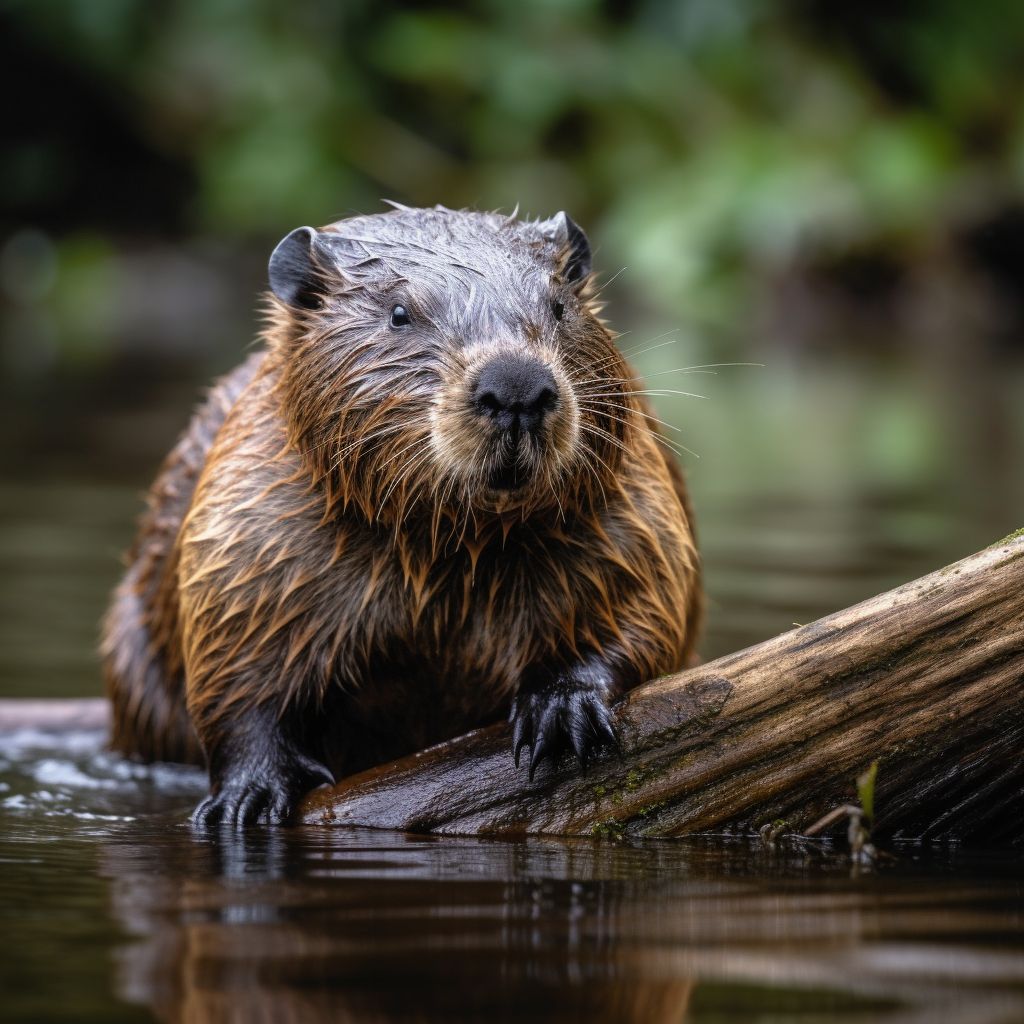Beaver
The American beaver (Castor canadensis) is a large, semi-aquatic rodent native to North America. As a keystone species, beavers play a vital role in the ecosystem by building dams and lodges, which create wetland habitats that support a diverse array of plant and animal life. In the late 19th century, beavers were highly valued for their fur, which was used to make fashionable clothing items such as hats and coats. Despite this demand, beavers also faced threats from habitat loss and overhunting.
Physical Characteristics
The American beaver is the largest rodent in North America, with adult males weighing between 35 and 65 pounds. Beavers have a distinctive appearance, featuring a broad, flat tail covered in leathery, brown scales, and large, orange front teeth. Their thick, waterproof fur ranges in color from reddish-brown to dark brown, with lighter underfur. Beavers have small, round ears and webbed hind feet, which enable them to swim efficiently.
Habitat and Distribution
American beavers inhabit a wide range of environments across North America, from the forests of Canada and Alaska to the deserts of Mexico. They are found near bodies of water, such as streams, rivers, and ponds, where they construct dams and lodges using branches, mud, and rocks. These structures regulate water flow and create stable wetland habitats that support a diverse array of plant and animal species.
Diet
Beavers are herbivorous, feeding primarily on the leaves, twigs, and bark of trees, as well as aquatic plants. They have a preference for certain tree species, including aspen, willow, and cottonwood. Beavers use their powerful teeth to fell trees, which they then cut into smaller pieces and transport to their lodges or dams.
Reproduction
American beavers are monogamous, forming lifelong pair bonds. They breed once per year, typically between January and March, with females giving birth to a litter of one to six kits after a gestation period of around 105 days. The kits are born fully furred and can swim within a few days. Both parents participate in the care and protection of their young, which remain with the family group for up to two years before dispersing to establish their own territories.
Conservation and Human Interaction
In the late 19th century, beavers faced significant threats due to the fur trade, which led to overhunting and population decline. The demand for beaver pelts was driven by the fashion industry, as their fur was highly prized for its warmth, durability, and water resistance. As a result, beaver populations across North America were decimated, leading to habitat loss and a reduction in the number of wetlands.
Efforts to conserve the American beaver and restore its populations have been undertaken in recent years, with varying degrees of success. The protection of beaver habitat and the implementation of sustainable hunting practices have contributed to the recovery of some beaver populations. However, the species still faces challenges from habitat loss, pollution, and climate change.
Conclusion
The American beaver is an iconic and ecologically important species that has faced numerous challenges in the late 19th century. Their unique ability to shape the landscape by constructing dams and creating wetland habitats makes them a vital component of North American ecosystems. Although they have been threatened by overhunting and habitat loss, conservation efforts have helped to ensure that the American beaver continues to play its crucial role in shaping the natural world.

